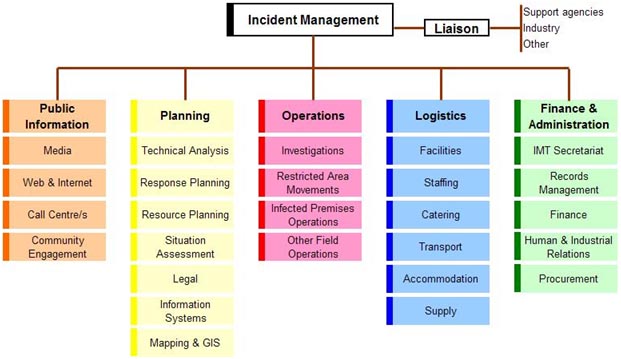The Biosecurity Incident Management System (BIMS) has been developed to provide guidance on contemporary practices for the management of biosecurity incident response and initial recovery operations in Australia.
BIMS is an ‘all hazards’ approach, which:
- represents the most contemporary approach to incident management
- co-exists with and complements current, sector specific and jurisdictional response arrangements
- is contextualised to a biosecurity environment
- can be applied to all biosecurity incidents, irrespective of sector or scale of response.
BIMS forms the basis for a consistent and effective management framework for all biosecurity incidents. It provides:
- flexibility
- scalability
- common terminology.
BIMS is underpinned by three key principles of:
- management by objectives
- functional approach
- span of control.

Biosecurity agencies may use BIMS when:
- planning for response to biosecurity incidents
- conducting staff training and development activities
- designing and conducting exercises that focus on elements of a biosecurity response
- responding to biosecurity incidents
- planning and conducting evaluation of any of the above activities.
All enquiries about the National Biosecurity Emergency Preparedness Expert Group and its activities should be directed to:
National Biosecurity Emergency Preparedness Expert Group
Email: NBEPEG
Australian Government Department of Agriculture, Fisheries and Forestry
PO Box 858, Canberra ACT 2600
Downloads
| Document | Pages | File size |
|---|---|---|
Biosecurity Incident Management System PDF  |
58 | 1.1 MB |
Biosecurity Incident Management System DOC  |
58 | 1.6 MB |
If you have difficulty accessing these files, visit web accessibility for help.
